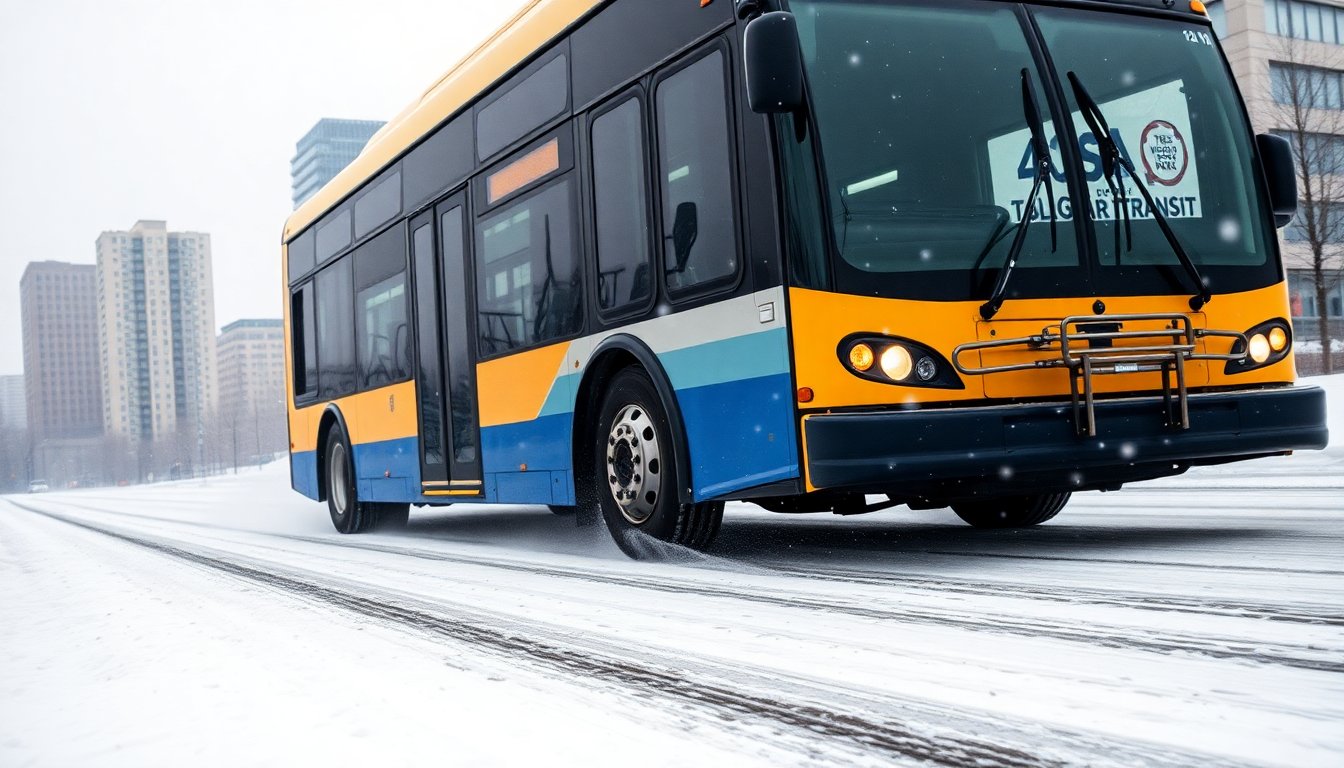Table of Contents
As winter approaches, Calgary Transit is taking proactive measures to ensure the safety and efficiency of its bus services. One of the key steps in this initiative is the transition from traditional all-season tires to all-weather tires designed specifically for year-round use. This change is expected to significantly enhance the buses’ ability to navigate Calgary’s challenging winter conditions.
According to Dennis Uvbiama, the manager of transit service vehicles for Calgary Transit, the new tires will replace existing all-season tires once they reach the end of their lifespan. This strategic upgrade aims to provide better traction and stability on icy roads, improving the overall travel experience for passengers.
The facts
The all-weather tires being introduced are rated with a Three-Peak Mountain Snowflake, indicating their ability to perform effectively in snowy and icy conditions. Uvbiama emphasizes the differences between the two types of tires, noting that all-season tires are primarily designed for dry surfaces, while the new all-weather tires feature deeper treads that enhance grip during winter months.
Prioritizing bus types for tire installation
To optimize the transition, the city has prioritized the installation of these tires based on bus length. The longest buses, which typically encounter the most difficulties in winter conditions, will be the first to receive the new all-weather tires. This strategic approach aims to mitigate potential delays and ensure smoother operations throughout the winter season.
“We are conducting direct comparisons between the performance of all-weather and all-season tires,” Uvbiama stated, highlighting the importance of gathering data on how these new tires operate under real-world conditions. Feedback from bus operators will play a crucial role in assessing the effectiveness of this transition.
The consequences
The city initially considered a seasonal tire swap, using winter tires in cold months and reverting to all-season tires in warmer months. However, Uvbiama explained that this option would pose logistical challenges, involving the management of approximately 5,000 tires twice a year. Additionally, winter tires tend to be more expensive than the chosen all-weather tires, which allow the city to maintain budgetary efficiency.
So far, Calgary Transit has successfully secured about 1,000 of the new all-weather tires, which represents roughly 20% of the total required for the fleet. The city plans to complete the installation of all-weather tires on its entire fleet by 2029, ensuring that all buses are equipped for optimal performance in winter conditions.
City’s commitment to winter safety and preparedness
The City of Calgary is also reminding its residents about the importance of winter preparedness as colder weather approaches. Chris Hewitt, Manager of Mobility Maintenance, reassured the public that city crews are ready to respond to winter conditions around the clock. The city follows a priority snow plan to ensure that the most heavily trafficked routes are cleared promptly after snowfalls.
Advice for residents during winter months
Hewitt encourages Calgarians to remain vigilant and prepare their vehicles for winter driving. Essential preparations include ensuring that vehicles are equipped with winter tires, emergency kits, and other necessary tools. He advises giving extra time for travel and maintaining a safe distance from other vehicles on the road.
In addition to providing guidance for drivers, the city is committed to maintaining safe pedestrian infrastructure, including sidewalks and pathways. Crews will focus on clearing these areas to facilitate safe movement for all residents, regardless of their mode of transportation.
According to Dennis Uvbiama, the manager of transit service vehicles for Calgary Transit, the new tires will replace existing all-season tires once they reach the end of their lifespan. This strategic upgrade aims to provide better traction and stability on icy roads, improving the overall travel experience for passengers.0


